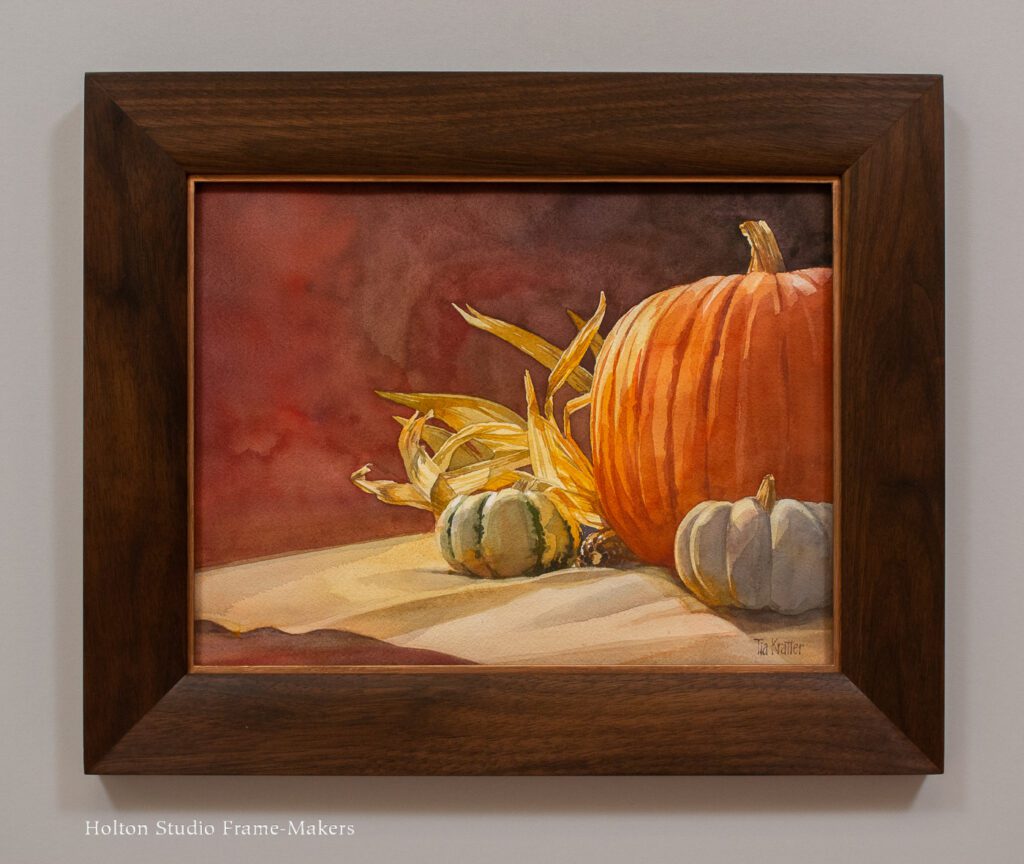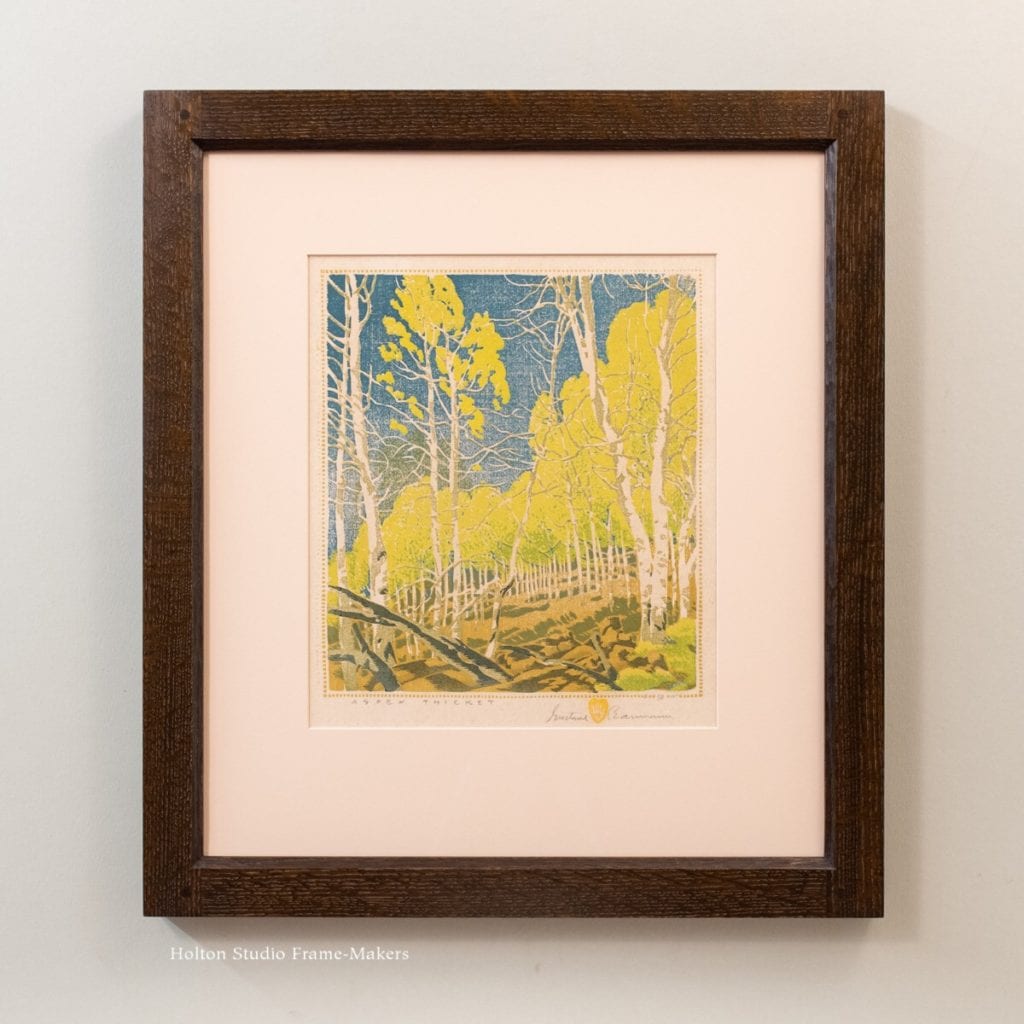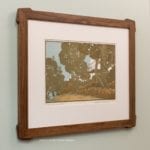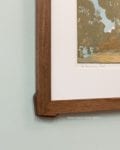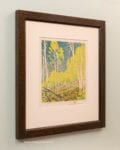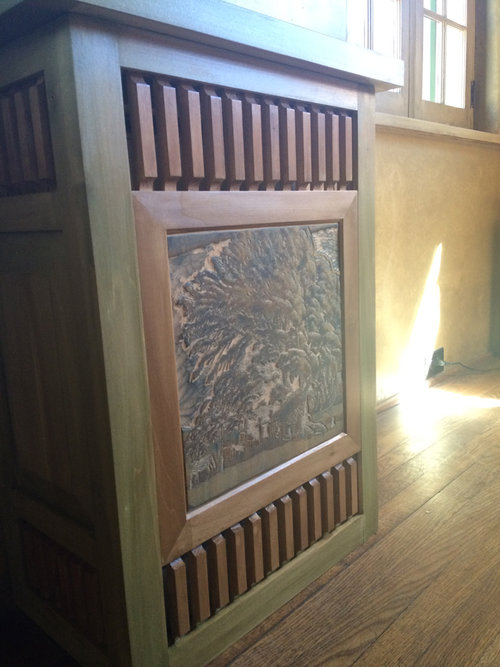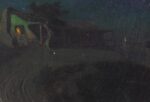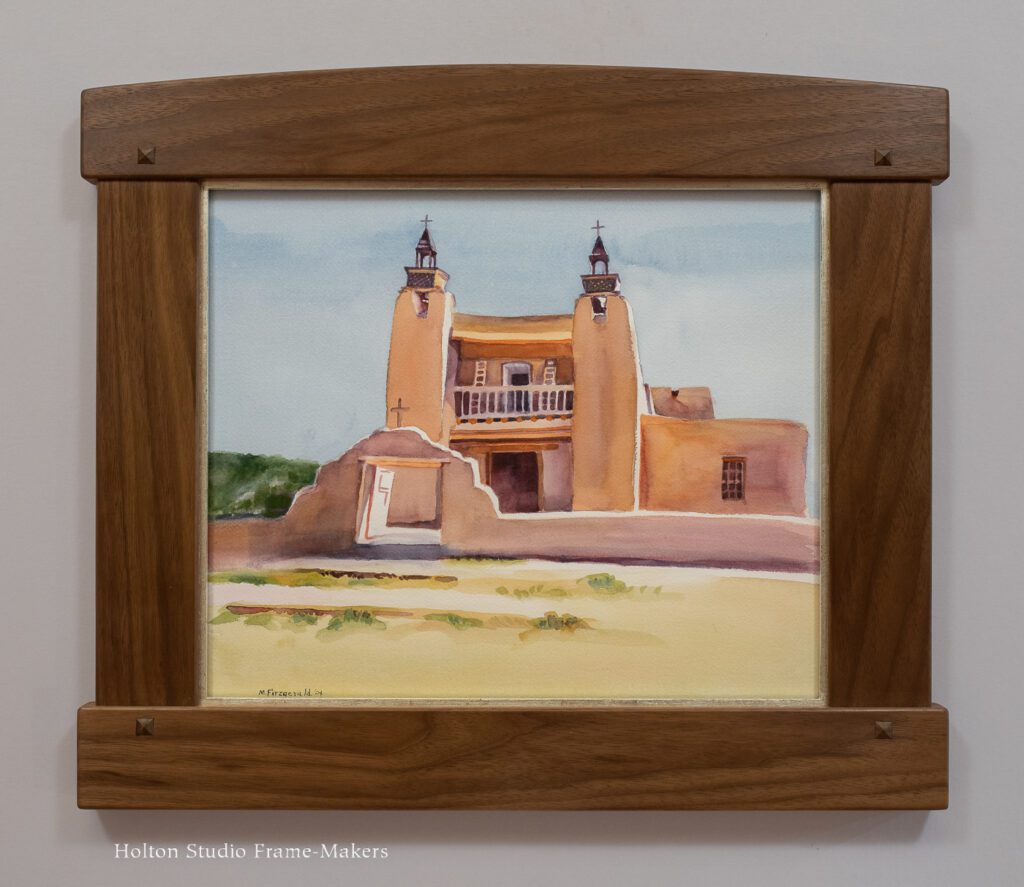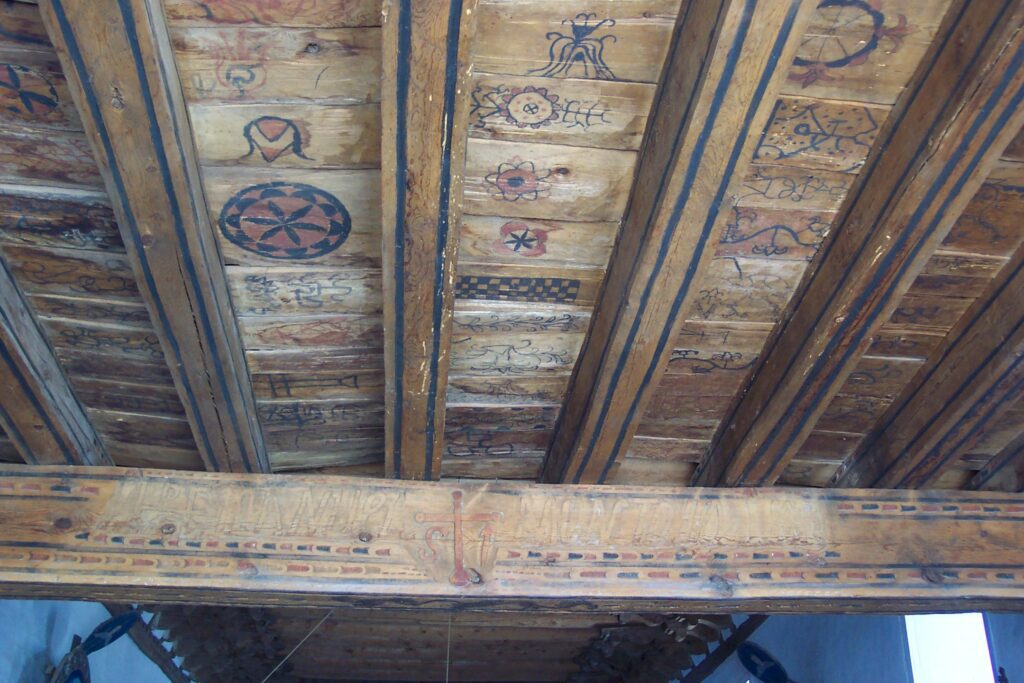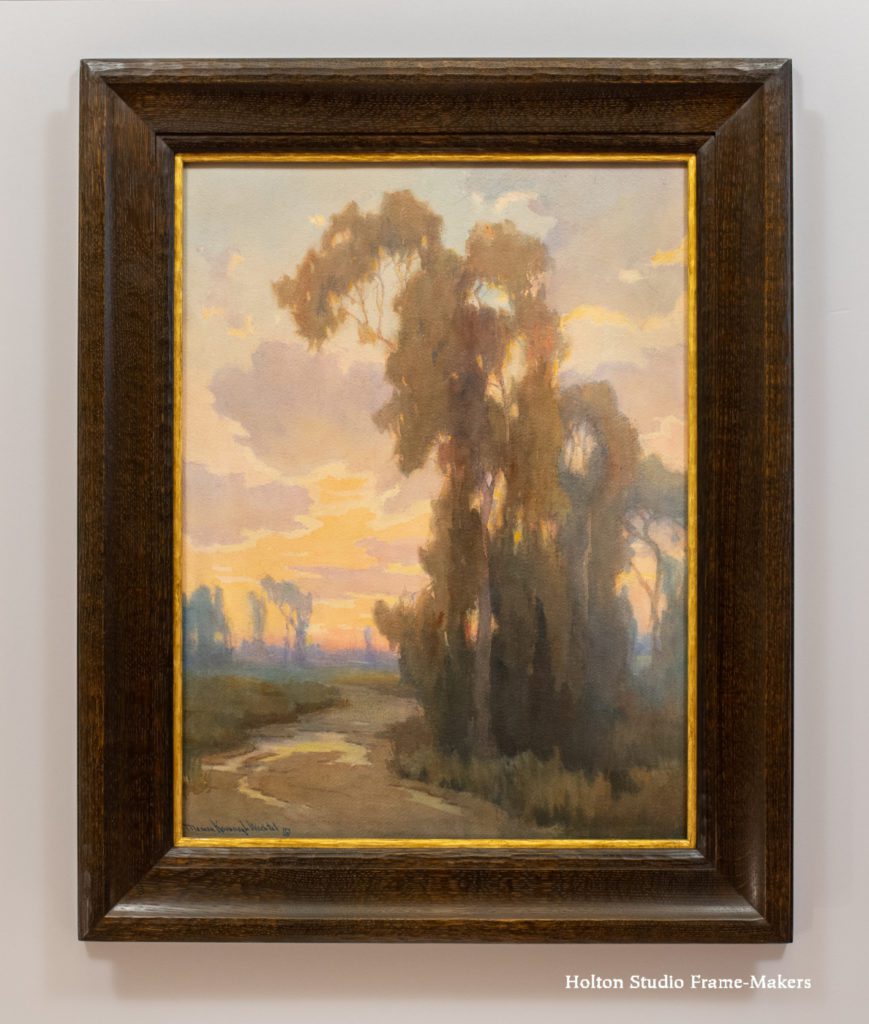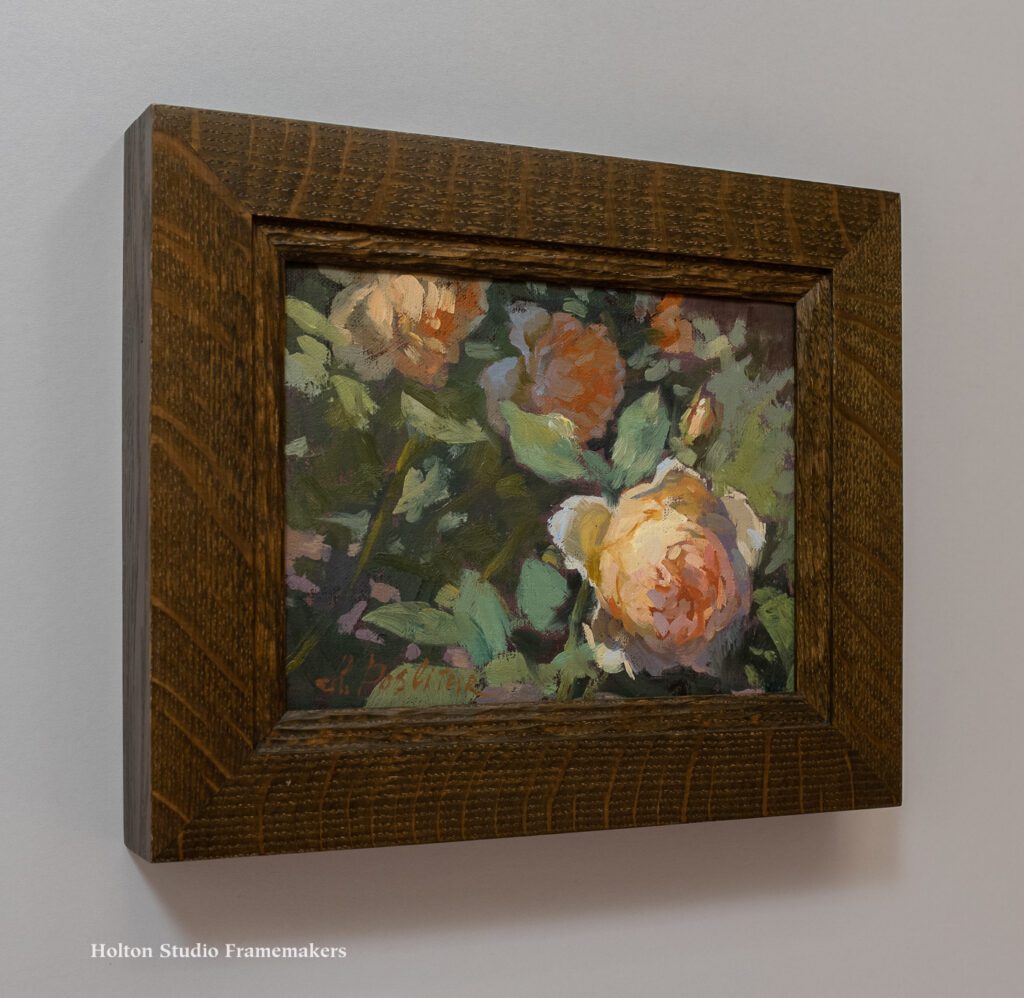I seem to have a theme going. Today’s post is my third in a row featuring a painting of an adobe. This one, an oil on canvas titled “Moonlight Adobe,” (no date; 20″ x 30″) depicts a simple dwelling dating from the era of Spanish and Mexican settlement on the Monterey Peninsula. It beautifully typifies the work of Charles Rollo Peters (1862-1928), a key figure in the artist colony that thrived at the turn of the twentieth century amidst the remains of that settlement. It also typifies the admiration California’s artists, writers, and architects felt for pre-industrial vernacular architecture and for the simpler, more harmonious way of life it stood for. As Peters told Frank Norris (in the interview quoted at length below), moonlight paintings were, in an age of specialists, simply his specialty. But to accept this explanation for his fixation at face value would be a mistake. Given the vast number of paintings he did on this theme—some of which are shown at the bottom of the post—they amount to a sustained meditation during a rare still moment in an age of rapid and relentless change.
 We framed “Moonlight Adobe” in a stained quartersawn white oak frame, No. 22.6 CV at 3″ wide (at right). To suit the simple architectural subject of the painting, the architecture of the frame had to be simple and reflect what’s so appealing about the adobe home: that our part in its making is subordinate to nature’s part—the beauty of the wood it’s made from. The overall form is a slope that repeats the angle of the hillside as well as the home’s tile roof. A sight edge chamfer and reverse bevel at the back edge add to the theme of angularity. Those two elements are carved, which picks up the textures of the surfaces depicted as well as that of the painted canvas. The hand carving is also a nod to a key virtue of these old structures that artists like Peters deeply admired: that they were, as Charles Keeler put it, “the work of hands instead of machines.” The slender sight edge slip is finished in bronze wax to echo the inviting lights inside the house and to give the dark painting emphasis on the wall.
We framed “Moonlight Adobe” in a stained quartersawn white oak frame, No. 22.6 CV at 3″ wide (at right). To suit the simple architectural subject of the painting, the architecture of the frame had to be simple and reflect what’s so appealing about the adobe home: that our part in its making is subordinate to nature’s part—the beauty of the wood it’s made from. The overall form is a slope that repeats the angle of the hillside as well as the home’s tile roof. A sight edge chamfer and reverse bevel at the back edge add to the theme of angularity. Those two elements are carved, which picks up the textures of the surfaces depicted as well as that of the painted canvas. The hand carving is also a nod to a key virtue of these old structures that artists like Peters deeply admired: that they were, as Charles Keeler put it, “the work of hands instead of machines.” The slender sight edge slip is finished in bronze wax to echo the inviting lights inside the house and to give the dark painting emphasis on the wall.
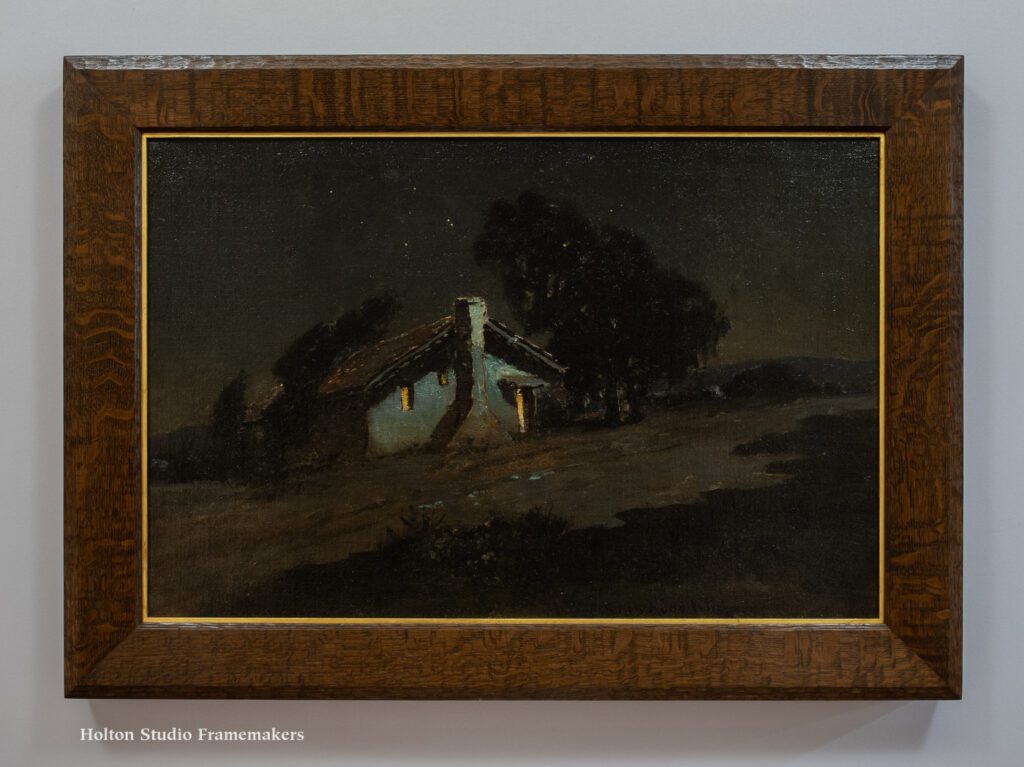
Other Charles Rollo Peters Moonlit Adobes We’ve Framed—
Read more here…
Frank Norris on Charles Rollo Peters
In 1897, the young novelist Frank Norris sought out Peters at his home in Monterey, writing a short profile of the painter for the San Francisco magazine, The Wave. Below is my abridged version of that article. The full text may be found here.
Peters met us at the gate, standing on the steps that were the vertebrae of a whale. He was booted to the knee, and wore a sweater and a sombrero, and looked just as picturesque as I had hoped and expected an artist should look… In Brittany he would have worn sabots and a beret, and perhaps a “blouse.” In England it would have been a velvet jacket, but in Monterey, mark you, the artist wears a sombrero and high boots, and stands on steps that are the joints of a whale’s spine. Where else would you see an artist with such attributes?
We went into the studio.
Redwood, unfinished, and a huge north light, a couch or two, a black dog, lots of sunshine, and an odor of good tobacco. On every one of the four walls, pictures, pictures, and pictures. Mostly moonlights, painted very broad and flat…
Peters told me he was “going in” for moonlights.
That’s a good hearing for his style, as the art critic would say; is “admirably adapted” for those effects where all detail is lost in enormous flat masses of shadow. Just the effect to be seen on a moonlight night.
“You would be surprised,” says Peters, “to see how many different kinds of moons there are.” He illustrated what he said by indicating one and another of the sketches. “There is the red moon, when she’s very low, and the yellow moon of the afternoon, and the pure white moon of midnight, and the blurred, pink moon of a misty evening, and the vary-tinted moon of the drawing. She’s never the same…
“It’s the specialists,'” Peters continued,”that ‘arrive’ now-a-days, whether they specialize on diseases of the ear, or on the intricacies of the law of patents, or on Persian coins of the 14th century.”
“Or on pictures of moonlight,” said I.
“Precisely; that’s my specialty.”
Peters lives in Monterey on a hill-top, and paints from dawn to dark. After dark he goes out and looks at the moon, and the land and the shore in her light, and at the great cypresses. He don’t paint there. Just looks and looks, and takes mental photographs, as it were — impressions he remembers and paints the next day. Singularly enough Peters, though going in for moonlights, does not paint them en plein air — how could he, for the matter of that, without any light to see by — but he does take a sort of combination note and sketch book along with him…
Peters thinks Monterey should be a great place for artists. He has sketched nearly everywhere, and maintains that there is more artistic “stuff” right down there in the old town than there is in Barbizon, even, or in the artist towns of Brittany. A few artists, in fact, have already “discovered” the place…
Other Peters Moonlit Adobes from Around the Web—
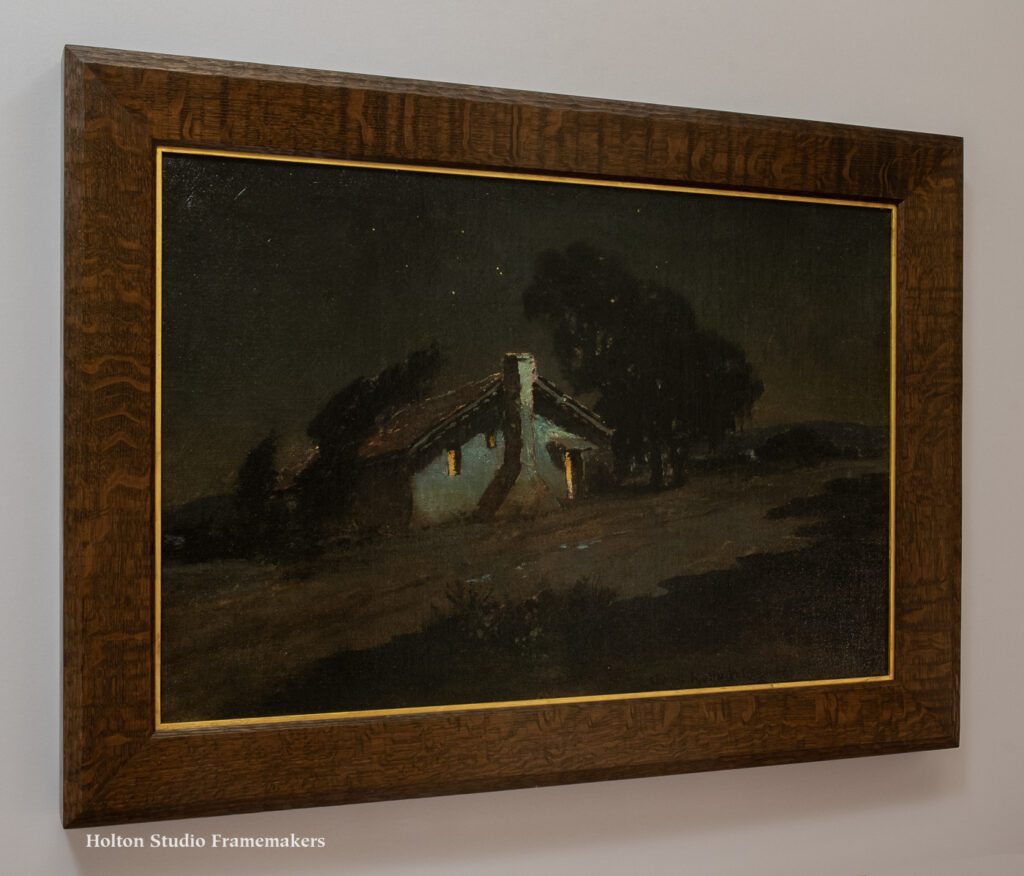
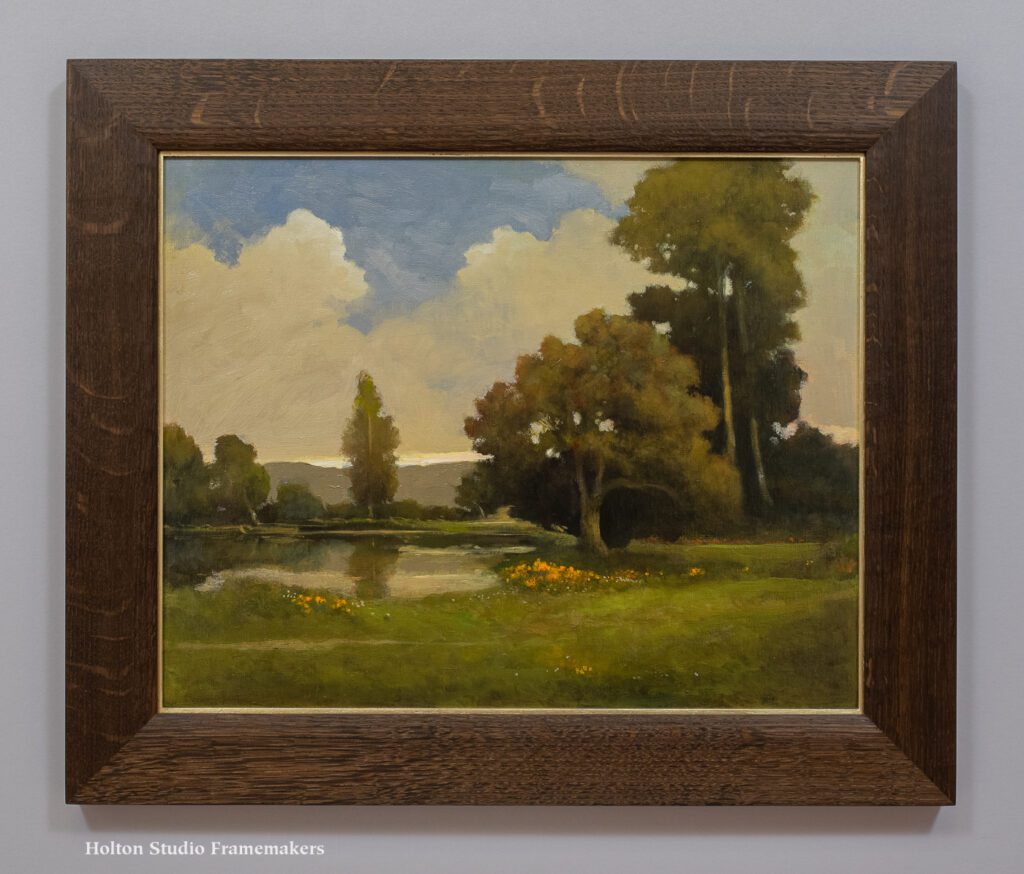 This frame on Paul Roehl’s painting, “Spring Coast Range,” at right, is fumed. Oiled, the color is a cool brown, which as is frequently harmonizes perfectly with the painting, especially with a tonalist palette like Paul’s.
This frame on Paul Roehl’s painting, “Spring Coast Range,” at right, is fumed. Oiled, the color is a cool brown, which as is frequently harmonizes perfectly with the painting, especially with a tonalist palette like Paul’s. After fuming, we often just oil the wood and wax it (with solvent-free pure boiled linseed oil and linseed oil wax—from these guys or this guy), but if the color’s not quite right, the wood can still be stained—or dyed. We use water dyes rather than stains. Our dyes are very good quality and penetrate the wood well. But there’s nothing like the depth and mellow effect you get by fuming.
After fuming, we often just oil the wood and wax it (with solvent-free pure boiled linseed oil and linseed oil wax—from these guys or this guy), but if the color’s not quite right, the wood can still be stained—or dyed. We use water dyes rather than stains. Our dyes are very good quality and penetrate the wood well. But there’s nothing like the depth and mellow effect you get by fuming.